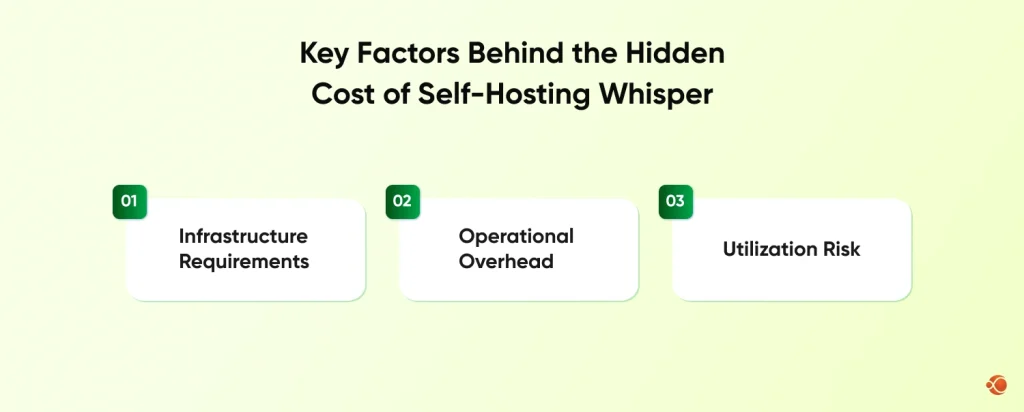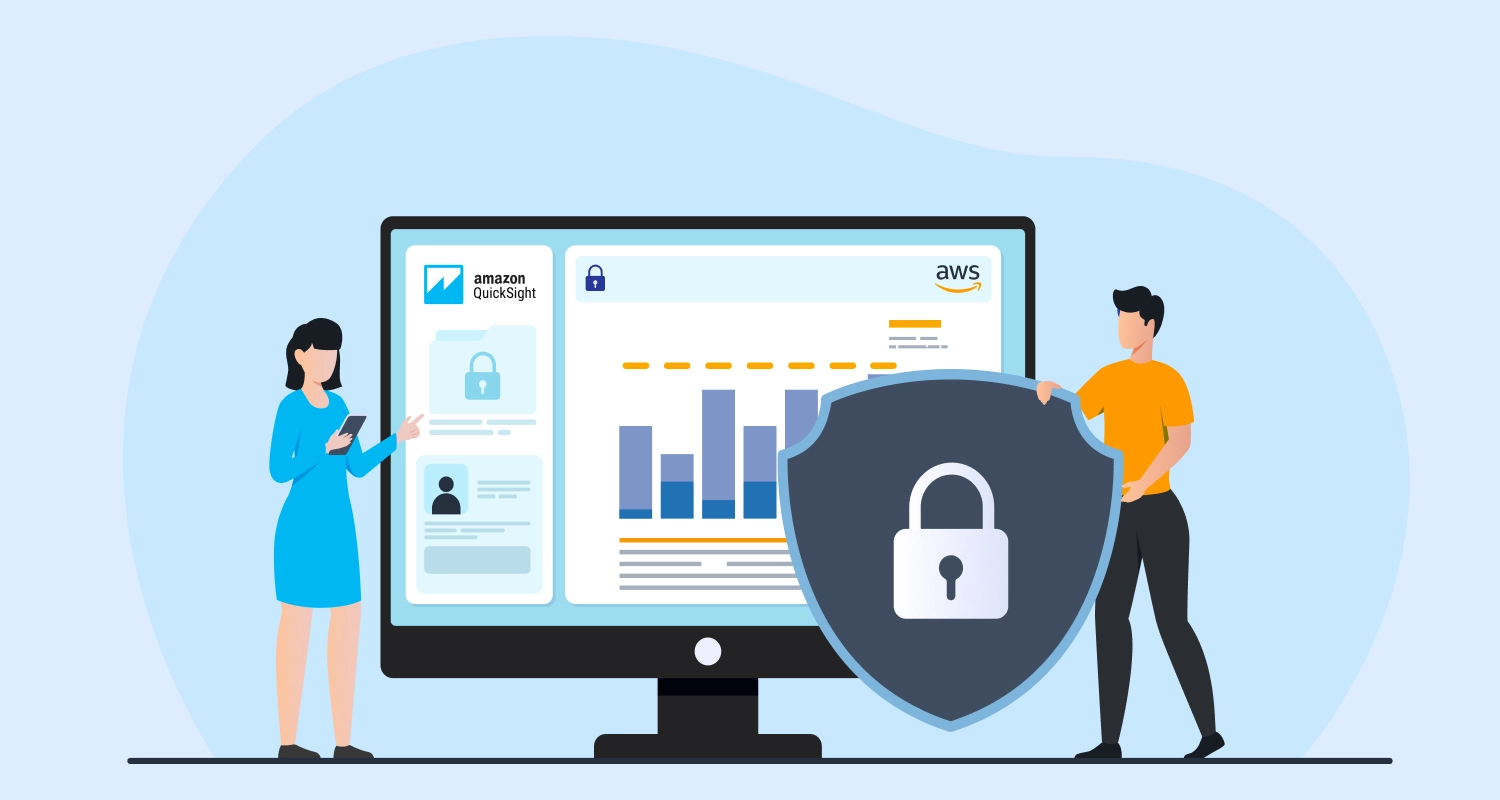Quick Summary: AWS Transcribe vs Deepgram vs Whisper, which speech-to-text solution should you choose for your voice enabled applications? Each platform is great in different areas like speed, accuracy, cost, and flexibility. This guide compares their strengths and limitations to help you pick the STT solution that fits your project and long-term goals.
For developers and businesses building voice-enabled applications, it is very important to choose the right speech-to-text (STT) or Automated Speech Recognition (ASR) engine. This foundational decision determines your product’s accuracy and speed, and also its long-term cost and development agility.
The global speech to text API market size was valued at USD 1321.5 million in 2019, and is expected to reach 3036.5 million by 2027.
Historically, many users have found cloud-based services like AWS Transcribe to be expensive, leading them to search for alternatives that deliver the same performance at a lower cost. The market today presents a class build-versus-buy question: should you opt for the open-source OpenAI Whisper or commit to a specialized managed API, such as Deepgram?
This guide will compare AWS Transcribe vs Deepgram vs Whisper, comparing these three STT solutions across core metrics like accuracy, speed, cost, and flexibility, to help you make an informed decision.
Getting Introduced: AWS Transcribe vs Deepgram vs Whisper
AWS Transcribe, Deepgram, and Whisper are the three leading players in this comparison. They all work on very different philosophies in the speech recognition landscape.
1. AWS Transcribe: The Managed Cloud Service
AWS Transcribe is Amazon Web Services’ proprietary SST solution. It is a fully managed service where developers handle only the input and the output, and AWS handles everything else.
- Key Advantage: Proper integration within the AWS ecosystem.
- Key Challenge: Higher costs and slower speed in comparison to specialized vendors.
2. Deepgram: The Speed and Scale Specialist
Deepgram is a Voice AI platform known for its end-to-end deep best speech to text models. It has a dedicated Nova series that is designed for enterprise-grade use cases, focusing on ultra-low latency and cost efficiency at scale. Some Deepgram alternatives include Google Cloud Speech-to-Text, Assembly AI, and more.
- Key Advantage: Impressive Powerful processing speed and flexibility in deployment options (cloud, Virtual Private Cloud, on-premise)
- Key Challenge: Historically supports fewer languages than most competitors.
3. OpenAI Whisper: The Open-Source Disruptor
OpenAI Whisper was released in 2022, democratizing high-quality multilingual ASR. Trained on 680,000 hours of supervised audio, it is now available as both an open-source model and a managed API. Whisper AI call transcription for SaaS apps works the best. There are also some open source Whisper alternatives like Coqui STT, Vosk, and Silero Models.
- Key Advantage: It boasts impressive accuracy, supports multiple languages, and can handle diverse audio formats.
- Key Challenge: Built for batch processing. So you need to hire AI developers to fine-tune for real-time streaming.
Now that we have a brief overview of the three STTs, let’s delve deeper into the differences between these top speech-to-text models.
Deepgram vs Whisper vs AWS Transcribe: Cost and Total Cost of Ownership
The first metric we need to compare and that most influences the decision of decision-makers, is the cost of switching to an STT provider over the other. However, raw API pricing provides only part of the picture.
Best Voice Recognition API Cost Comparison
| Provider (Model) | Base Price (Per 1000 Minutes) | Notes |
| Deepgram (Nova-3) | $4.30 | Cheapest managed API; volume discounts available. |
| OpenAI Whisper (API) | $6.00 | Slightly higher; still competitive for batch transcription. |
| AWS Transcribe (Standard) | $24.00 | Significantly more expensive than specialized competitors. |
What are the Factors that Affect the Hidden Cost of Self-Hosting Whisper?

1. Infrastructure Requirements:
To run a large Whisper model, powerful GPUs are required. For instance, a single AWS g5.xlarge instance (approximately $1 per hour) can process only one transcription at a time, costing around $750 per month.
2. Operational Overhead:
Self-hosting provides updates, debugging, and scaling. All of this needs artificial intelligence software development services and maintenance budgets.
3. Utilization Risk:
If GPUs aren’t used continuously, their idle time inflates costs, making managed APIs like Deepgram more cost-effective for smaller or fluctuating workloads.
For most small to mid-scale teams, managed APIs offer a better balance of price, reliability, and simplicity.
Deepgram vs OpenAI Whisper vs AWS Transcribe: Accuracy (Word Error Rate)
Transcription accuracy is typically measured using the Word Error Rate (WER) metric,where the lower the WER, the better the score.
Formatted vs Unformatted WER
- Unformatted/Normalized: Ignores the punctuation and capitalization errors, ideal for feeding text into AI models or analytic pipelines.
- Formatted/Unnormalized: Includes punctuation and casing, critical for end-user readability, like captions or subtitles.
Normalization often significantly reduces WER scores, which is why consistent benchmarking standards are crucial.
Accuracy Insights from Benchmarks
- OpenAI Whisper General Accuracy: The Whisper Large-v3 model demonstrated a 10-20% improvement in accuracy over the Large-v2 model. It ranks as a top performer, especially for noisy or accented audio.
- Multilingual and Accent Robustness: Whisper handles multiple languages and accents effectively, although Google Gemini (based on LLMs) occasionally surpasses it in technical and specialized speech transcription.
- Deepgram’s Domain Strength: Deepgram Nova-3 achieved a milestone in WER, scoring 5.8% in technical audio benchmarks, outperforming all general-purpose models in specialized use cases, such as medical transcription.
AWS Transcribe vs Whisper vs Deepgram: Latency and Real-Time Performance
Batch Processing Speed:
- Deepgram: Deepgram Transcribes one hour of audio in 20 seconds, making it one of the fastest STT in the market.
- AWS Transcribe: Takes around 5 minutes of transcription time per audio hour.
- OpenAI Whisper: Needs 10-30 minutes for a similar workload, depending on the model size and hardware.
Real-Time (Streaming) Latency:
| Provider | Latency | Real-Time Support |
| Deepgram | 300–800 ms | True real-time with live word-by-word transcription. |
| AWS Transcribe | 50-200 ms | Supports streaming but with slower response. |
| OpenAI Whisper | N/A | Not built for streaming; uses 30-second chunk processing. |
The Real-Time Accuracy Tradeoff:
All streaming ASR models trade a bit of accuracy for lower latency. Typical loss is around 3–5% in WER.
- Whisper Streaming Workarounds: Often suffer from unstable punctuation, fragmented sentences, and occasional hallucinations.
- Best Real-Time Raw Accuracy: AWS Transcribe and Assembly AI outperform others when punctuation is not taken into consideration.

Deepgram vs OpenAI Whisper vs AWS Transcribe: Feature Depth, Customization, and Deployment
Beyond speed and accuracy, the enterprise-grade adoption choice between AWS Transcribe vs Deepgram vs Whisper depends on the customization options and deployment flexibility.
Customization and Vocabulary Control
- OpenAI Whisper: You can fine-tune the entire model because OpenAI is an open-source project. It’s best suited for educational use cases.
- Deepgram: Offers keyword boosting and AI model training for specific domains. Technical and medical variants (such as Nova-3 Medical) are deeply optimized.
- AWS Transcribe: Provides custom vocabularies and language models, but WER improvements are limited.
Enterprise Features and Compliance
| Feature | Deepgram | AWS Transcribe | OpenAI Whisper (Open Source) |
| Speaker Diarization | Up to 16 speakers | Up to 5 speakers | None (requires WhisperX) |
| Multilingual Support | 30+ languages | Limited | Up to 98 languages |
| Search Functionality | Phonetic (audio-based) search | Text-based search only | None built-in |
| Compliance & Security | HIPAA, on-prem/VPC options | HIPAA eligible | Fully self-managed by user |
Deepgram’s enterprise readiness, especially in phonetic search and high diarization limit, gives it an edge for regulated or data-sensitive environments.
Deepgram vs OpenAI Whisper vs AWS Transcribe: Developer Experience and Ecosystem
The practical reality of integrating a Speech-to-Text (STT) engine often comes down to the developer experience. Which is why you should either hire AWS developers or look for other specialized profiles for your chosen STT. This includes ease of integration, the surrounding tool ecosystem, and the nature of the managed offerings.
Ease of Integration
| Provider | Integration Experience | Detail |
| Deepgram | Excellent | Well-documented SDKs and API Playground for fast setup. |
| OpenAI Whisper (API) | Good | Simple API endpoints; fewer out-of-the-box features. |
| AWS Transcribe | Medium | Requires understanding of AWS roles, S3, and permissions. |
Provide SDKs and Language Support
| Provider | SDK Coverage | Languages/Frameworks |
| Deepgram | Wide | Python, Node.js, Go, .NET, and REST API support |
| OpenAI Whisper (API) | Moderate | Python-first SDK support through OpenAI libraries |
| AWS Transcribe | Broad | SDKs available across AWS-supported languages including Python (Boto3), JavaScript, Go, and .NET. Integration via AWS CLI and SDKs. |
Deepgram vs OpenAI Whisper vs AWS Transcribe Use Cases
When to Choose Deepgram:
- Real-time transcription for voice assistants or live captioning.
- Regulated environments, such as healthcare or fintech, where HIPAA compliance and data security are important.
- Domain-specific audio, like technical or medical transcription.
When to Choose OpenAI Whisper:
- Multilingual batch transcription for global content.
- Research or academic use where open-source flexibility is critical.
- Projects requiring fine-tuned models or integration into custom pipelines.
When to Choose AWS Transcribe:
- Streaming applications where minimal operational overhead is preferred.
- You need to set up application integration on the AWS ecosystem.
- General-purpose cloud transcription for handling specialized workloads.
Key Considerations To Select The Best Speech-to-Text Platform
| Aspect | Self-Hosted Whisper | Managed APIs (e.g., Deepgram) |
| Hardware Requirements | Needs powerful GPUs (e.g., AWS g5.xlarge); idle time increases cost | No special hardware needed |
| Cloud Provisioning & Scaling | Requires careful planning and setup | Scales automatically |
| Networking & Latency | Latency can impact real-time apps; depends on deployment | Low-latency endpoints provided near users |
| Maintenance | Teams handle updates and infrastructure | Minimal maintenance; automatic updates and predictable SLAs |
How to Future-Proof Your Speech-to-Text API Platform
Open-Source vs Managed APIs:
- Whisper has flexibility for customization, but you will be responsible for all maintenance, updates, and scaling.
- Managed APIs, such as Deepgram and AWS, can automatically manage updates and scaling, reducing the operational burden.
Model Updates:
- Deepgram regularly updates models with improved latency and domain-specific accuracy.
- Whisper improvements are community-driven and require manual adoption.
Key Takeaway: Select an STT provider whose future plans align with your needs. If you’re growing rapidly, handling complex tasks, or need real-time features, choose the Deepgram voice agent API for scalable solutions.
Final Words
It is essential to choose the best speech to text API to ensure project success. Deepgram is ideal for real-time performance and enterprise features. When comparing Whisper to AWS Transcribe, Whisper offers proper multilingual support. AWS Transcribe is ideal for companies that use Amazon services.
The best choice in this speech recognition API comparison will be based on your priorities, whether it’s speed, flexibility, or ecosystem. Evaluating cost, deployment, and roadmap ensures your STT solution meets both immediate needs and future growth.
FAQs for Best STT Comparison: AWS Transcribe vs Deepgram vs Whisper
Can Whisper be used for live streaming / real-time?
Whisper is primarily designed for batch processing, so it isn’t built for real-time streaming. Developers can implement workarounds with chunked audio, but this may result in latency and punctuation errors.
What’s the cost trade-off between using Whisper vs Deepgram / AWS?
Self-hosting Whisper requires higher GPUs and maintenance. This can prove to be expensive for the requirements of continuous workloads. Managed APIs, such as Deepgram, are more cost-effective for scaling, while AWS Transcribe has the highest per-minute cost.
How accurate is AWS Transcribe compared to Deepgram?
AWS Transcribe delivers decent accuracy for general audio but lags behind Deepgram in domain-specific transcription. Deepgram’s models are designed for specialized use cases. This can include requiring medical or technical content.
Is Deepgram better than Whisper?
Deepgram vs Whisper depends on the use case. Deepgram excels in real-time streaming, enterprise features, and controlled environments, whereas Whisper is best for open-source projects.
What is the best speech-to-text API?
It is ideal to choose Deepgram for real-time, secure, and specialized workloads. You should choose Whisper for open-source and research-focused projects. AWS Transcribe works best for teams working on the AWS ecosystem.







